Results from October’s launch
It's lightly edited but otherwise untouched. I've kept them on the site to show how the journey has evolved.
Welcome to October’s business breakdown.
Each month we take a peak under the hood of my business, discussing:
- Freedom (leverage)
- Revenue (income and expenses)
- Growth (social media and newsletter)
You’ll hear about the results of relaunching my second product, a cautionary tale about following guru advice, and what I’m betting big on in 2024.
This one’s a 7-minute read.
Let’s dive in.
The Freedom Metre
At the start of the year, I set a business goal to hit 90% ‘high leveraged’ income. We started at 43%. Here are the figures now:
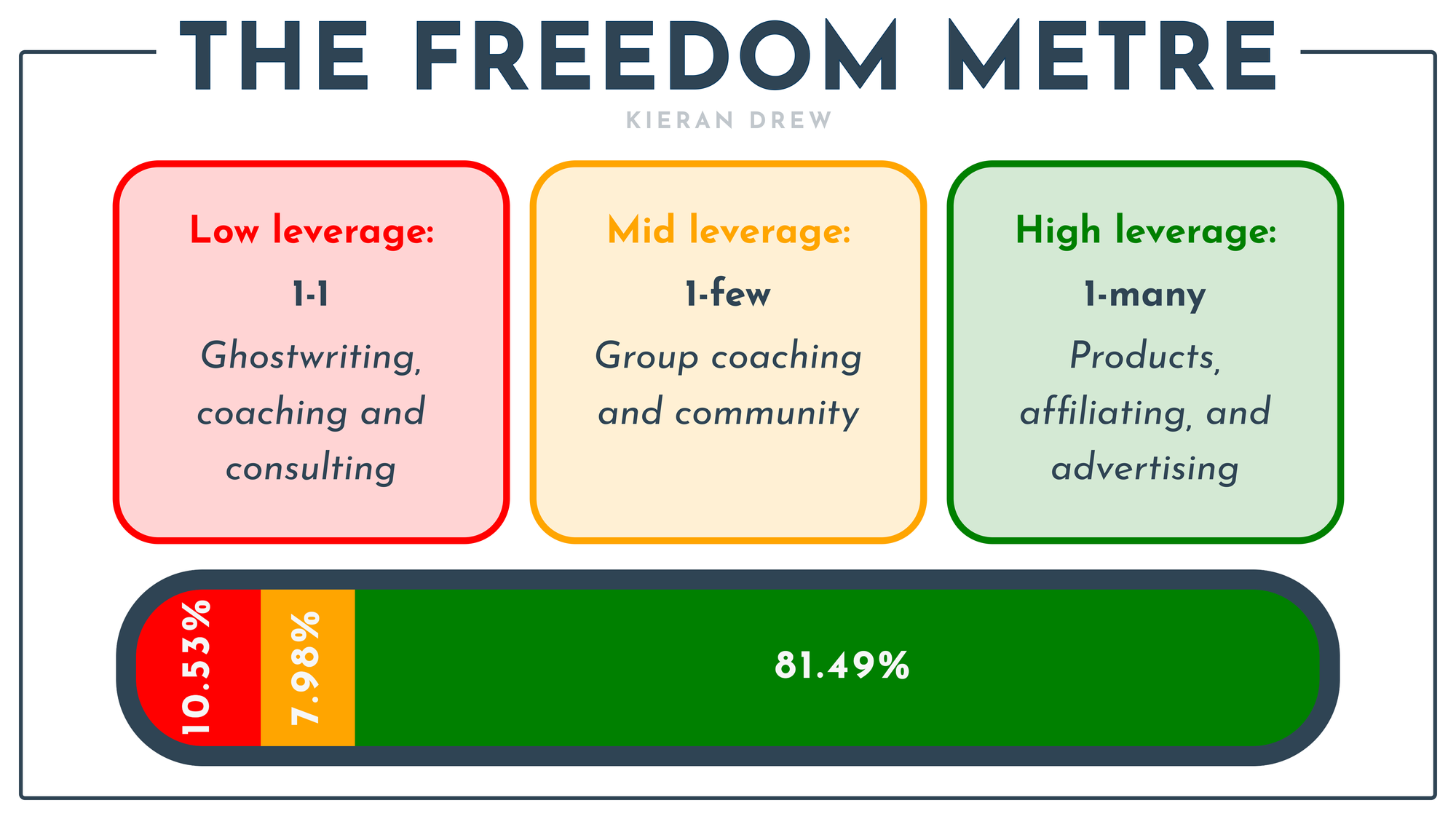
This didn’t change much from last month because I took on a few 1-1 calls - mainly around product launches.
Let’s unpack the numbers.
October net income: $12,243
Gross Revenue
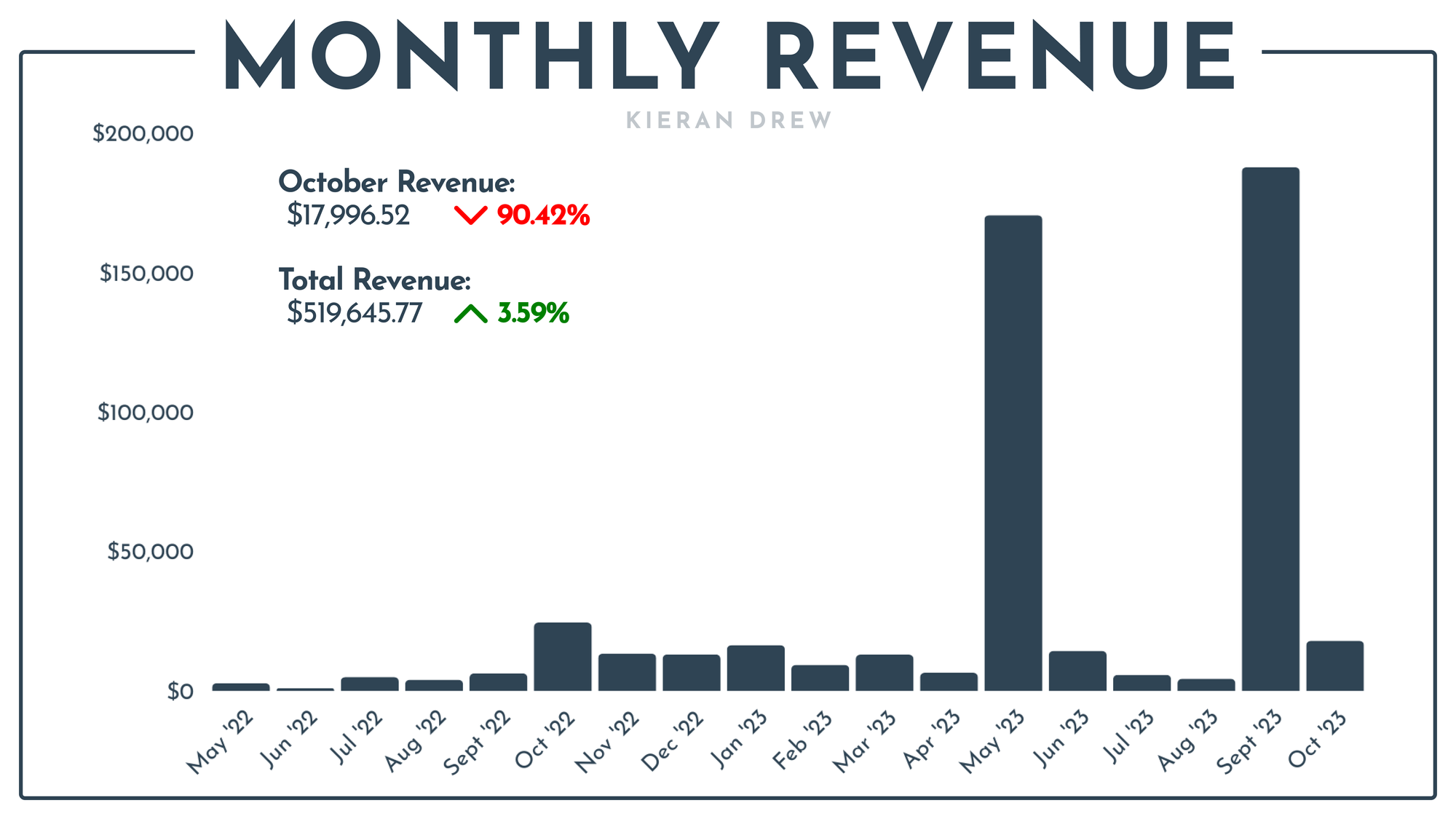
Aside from the 6 figure months, $17.9k is one of my best - it looks tiny on the graph but it’s a decent chunk of change.
I worked out that, including my and my girlfriend’s wage, and investing in education, I need to gross around $10k/month to break even. I don’t like to set number goals because they steal the joy from business, but I’m at a stage now where I shouldn’t really be losing money, either.
So one commitment I’ve made is to make one offer per month.
Mostly my stuff, but I’ll also reach out to experts whose products I love - like last week for John Bejakovic’s brilliant email course.
Income breakdown:
- Affiliating = $317.96
- Sparkloop = $142.58
- 1-1 Coaching & Consulting = $2150
- Group coaching = $1600
- Digital Products = $13,785.98
In mid-September, I re-launched the Viral Inspiration Lab, which grossed $8,000.
It’s much less than High Impact Writing (HIW), but I was happy to see it.
Why?
Because big launches are exhausting, and I don’t want to rely on them to grow my business. You should take advantage of the launch model, but it’s important to balance it with periods of calm - for your's and your audience’s sake.
This time, I marketed much less and had a blast writing the emails.
I also rewrote the sales page because my copy from last year made me cringe harder than when I think about my first kiss.
But here’s the cool part:
I used Convertkit’s Liquid so that my emails differed depending on certain tags - such as if you already owned HIW. Then, anyone who bought the Lab and didn’t own HIW received several automated pitches offering an upgrade.
Those tweaks pulled in an extra $3k.
It’s a small touch. But now, every time I launch an offer, I’ll stack more of these automations. Much like a fine wine or particularly stinky cheese, it’s only gonna get better over time.
Expenses
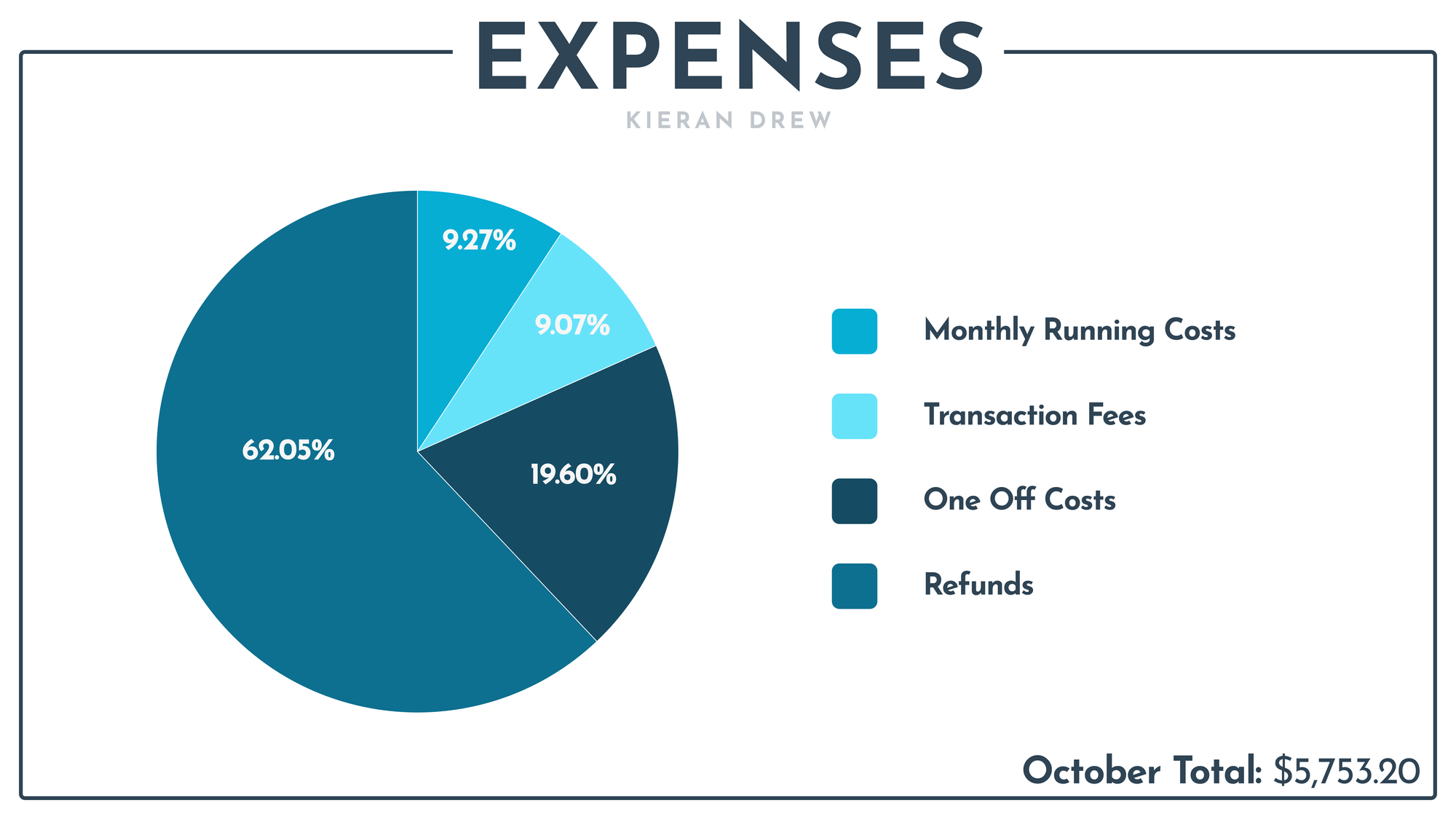
The start of October caught the tail end of the 30-day guarantee on HIW - which has a 4.7% refund rate. I’ve heard that’s pretty good for a no-questions-asked policy. But I’ll continue working to improve the percentage.
Audience Growth
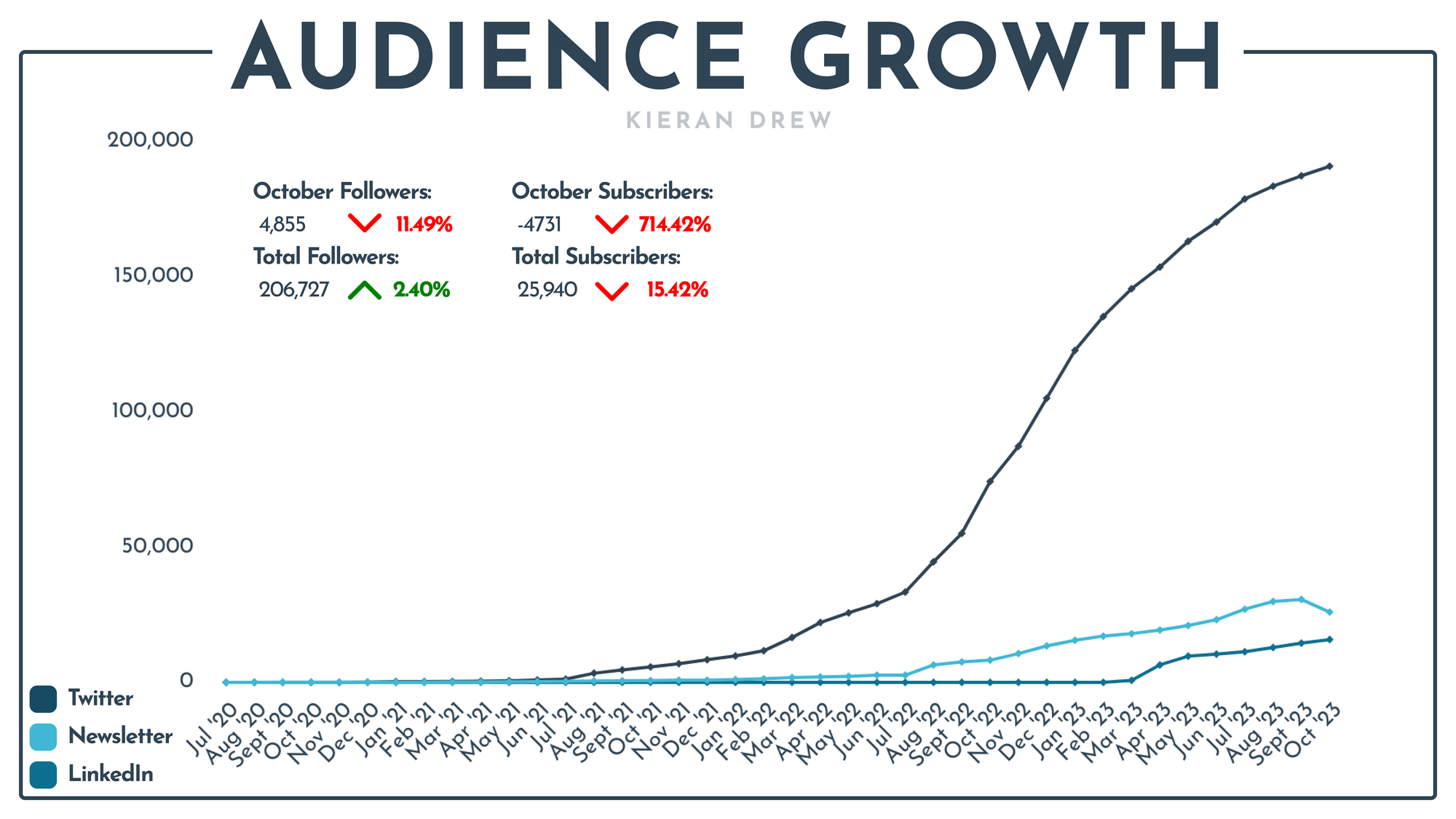
A lot of red text here!
Social media’s not a focus right now, but it’s ticking over. I’m enjoying the long-form tweets and plan on increasing volume once I’ve taken care of business. I will also give LinkedIn more time if I ever find it.
For email, I kicked 6,000 cold subs off the list. You want to keep your newsletter lean ‘n clean to avoid being marked as spam.
What’s next: Daily Emails? Not Daily Emails?
Last month, I declared I’d be joining the daily email world. Last week, I told my girlfriend, Jena, I need to stop making declarations.
One downside of building in public is you spend a lot of time explaining why you changed your mind. Hopefully, it helps you see that most people are figuring it out as they go.
So here’s the problem.
I love daily emails. Great fun to write, great fun to read.
Email copywriters swear by them, saying the once-a-week newsletter model is stupid. They explain that “you don’t make money by giving value.” And it’s true. Education-based content is not the best short-term revenue generator.
But it is brilliant for long-term reputation.
The difficulty with learning from people a few steps ahead is that their ideology is persuasive - they believe in what works for them.
But here's the truth:
The advice is much less important than the execution.
"Give everything away for free"
— Kieran Drew (@ItsKieranDrew) November 7, 2023
"Charge for whatever you build"
"Grow an audience first"
"Launch an offer first"
"Only write on one platform"
"Create on every platform"
"Don't use templates"
"Use whatever you need"
"Build a network early"
"Build skills early"
"Work hard"…
Daily emails work.
Value emails work.
If they didn’t, I wouldn’t have a business right now. The only reason I’m enjoying relative success is because I try to overdeliver in my content.
You need to understand what you're optimizing for.
For me, that’s thinking of unique and useful ideas.
Sure, daily emails have their own creative challenge. But there’s something special about spending 15+ hours writing one article. The revenue might not be as good, but the quality of ideas is much higher.
And if I had to place one bet this decade, it’s this:
Quality ideas are the best way to survive the sea of ever-increasing noise. Perhaps even the ONLY way. AI will reduce the cost of creating content to zero - you can’t afford to be a commodity.
My plan is a hybrid approach:
First, social media is to share what I’m:
- Doing
- Learning
- Thinking
Kinda like the daily emails, but without spamming your inbox. I’m going to (try) reduce my ‘playing to the algorithm’ and only write the content I would be fascinated to read.
Second, I’m going to write a weekly deep dive newsletter. These will be in-depth solutions to problems I’m wrestling with. If you want to write online and grow your business, you'll enjoy what I'm cooking up.
Third, when I launch offers, I’ll send a small blast of story-driven daily emails. These are great fun to write and hopefully fun to read.
I don’t have a coherent system yet, but I’ll document the results as I go. Ideally, I’d love to publish 50 essays by the end of 2024 - whilst building a few products to help you win. I can’t imagine any creator who does the same will be in a bad position.
I’m sure I’ll be in touch next month to tell you I was wrong again,
Kieran
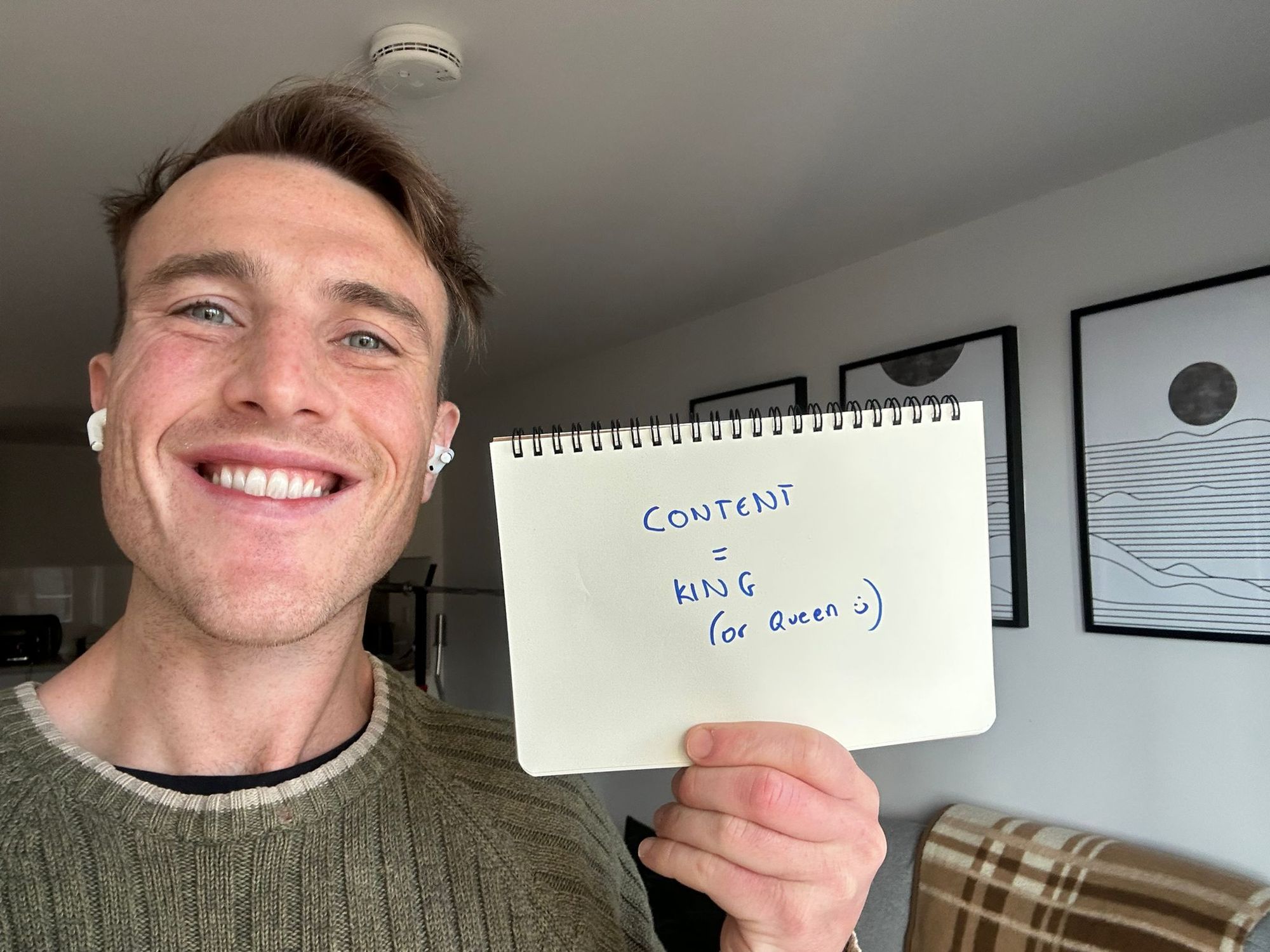
About Kieran
Ex dentist, current writer, future Onlyfans star · Sharing what I learn about writing well, thinking clearly, and building an online business